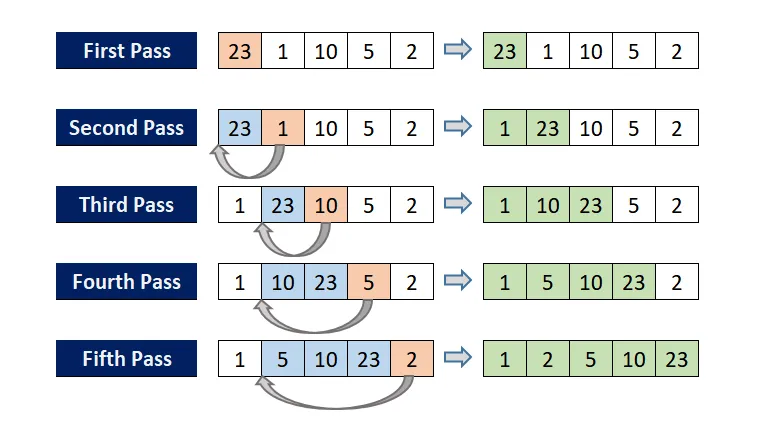Insertion sort is a primitive sorting algorithm that sorts in ascending order. The idea is that we do passes for each element, then another iterations to check if its sorted.
It has an time complexity of in the average-case and in the worst-case. It’s slow in the worst case! So we use other algorithms.

Implementation
Below is an implementation in C++:
void insertionSort (std::vector<int> list) {
for (int top = 1; top < list.size(); top++) {
int key = list[top];
int index_of_empty_slot = top;
while (index_of_empty_slot > 0
and key < list[index_of_empty_slot - 1]) {
// shift data to the right to make space
list[index_of_empty_slot] = list[index_of_empty_slot - 1];
index_of_empty_slot--;
}
list[index_of_empty_slot] = key;
}
}Proof
For correctness, we can use a loop invariant that suggests: at the start of each iteration of the for loop, the sub-array list[0:i - 2] consists of the elements originally in that sub-array but in sorted order.1
- Base case: we have
top = 1. Since we’re dealing with a single element-large sub-array, this is obviously already sorted. - In the loop: intuitively this holds by how it works. We slowly move the values one by one until it finds a proper position for
list[i]. - Termination: the loop terminates after we exceed
list.size(). This tells us that the subarraylist[0:n - 1]contains the same elements but sorted in the loop.
Footnotes
-
From CLRS’ Introduction to Algorithms. ↩